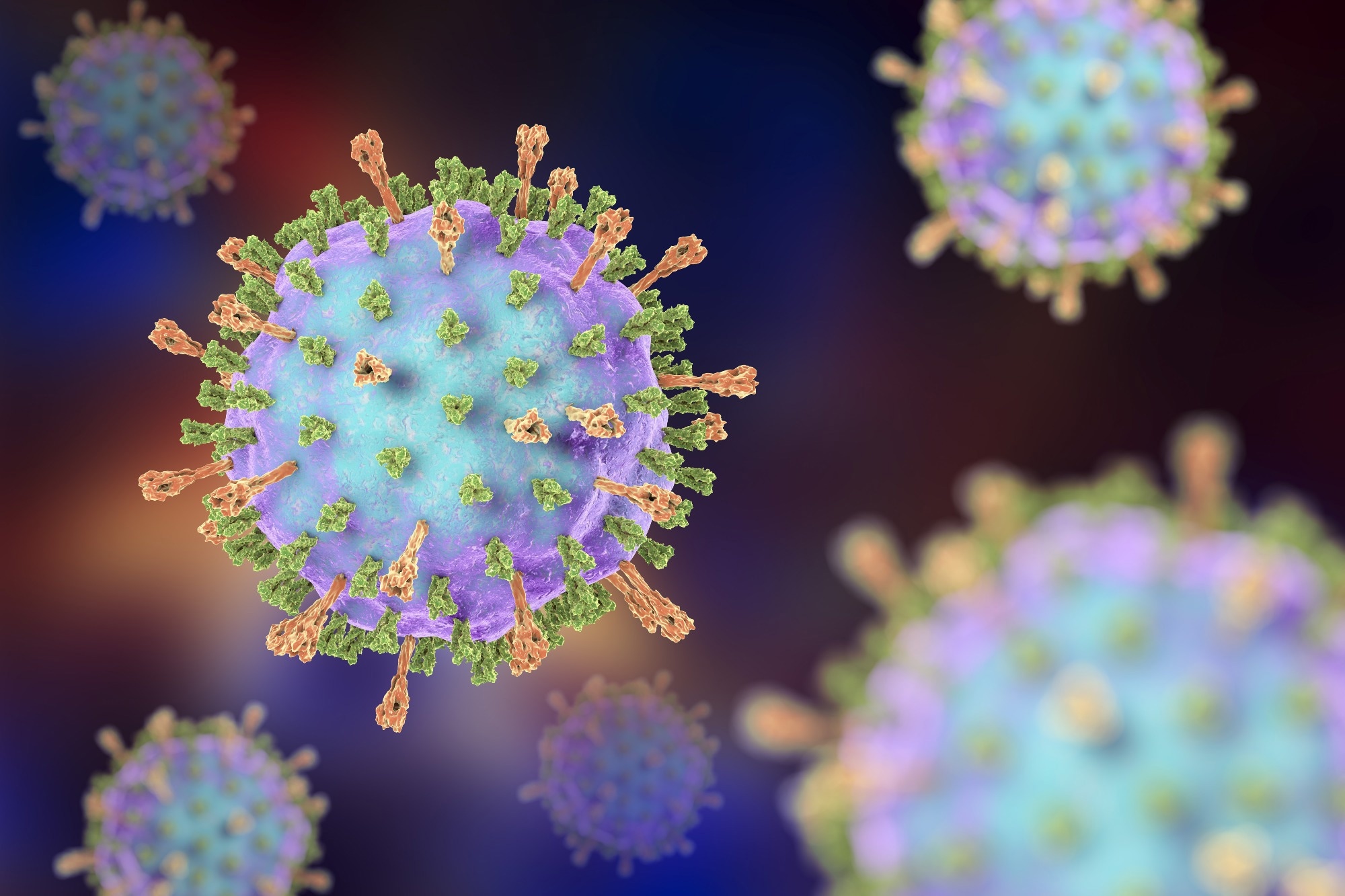In a recent study published in the Proceedings of the National Academy of Sciences (PNAS), researchers investigated the putative mechanism(s) of vaccine failure underlying the resurgence of mumps in the United States (US).
 Study: Disentangling the causes of mumps reemergence in the United States. Image Credit: Kateryna Kon/Shutterstock
Study: Disentangling the causes of mumps reemergence in the United States. Image Credit: Kateryna Kon/Shutterstock
The sustained mumps re-emergence over the past two decades in countries with high vaccination coverage has raised concerns about the effectiveness of available vaccines. Two leading hypotheses about the vaccine failure underlying this re-emergence are 1) transient vaccine immunity (waning hypothesis) and 2) imperfect immunity due to a genetic mismatch between current viruses and vaccine strains (leaky hypothesis).
The study and findings
In the present study, researchers performed statistical likelihood-based hypothesis testing using dynamic transmission models to determine the mechanism of vaccine failure underlying mumps resurgence. They leveraged age-structured time series data of mumps incidence in the US between 1979 and 2018 for hypothesis testing.
The team formulated a two-genotype, age-structured transmission model for each vaccine failure mechanism. In addition, three models of immune waning were investigated. The first model assumed an exponential distribution of vaccinal immunity duration, namely, no characteristic age for immunity decay.
In the second and third models, vaccinal immunity duration was modeled using an Erlang distribution that permits a modal age for immunity decay. All hypotheses were compared to a ‘no loss’ model that assumed permanent, perfect vaccinal immunity. The exponential waning model best explained the observed mumps data. The basic reproductive number (R0) was estimated at 14, with protection lasting for about 111 years for this model.
In contrast, the leaky model had an R0 of 22 and explained the resurgence of mumps in the early 2000s. Although the leaky model predicted disease resurgence post-2006, the predicated case profile was distributed evenly across age groups, contrasting the observed data wherein peak cases were recorded in the 15 – 25-year age group.
The no-loss and Erlang waning models performed substantially worse. Time series stimulated from the exponential waning model reproduced the critical features of mumps data, such as the initial vaccine era decrease and re-emergence in the 1980s and the mid-2000s. However, it did not capture the duration and the peak of the mid-1980s resurgence and the distinct 2006 and 2010 outbreaks.
Moreover, the exponential waning model best captured the dynamics of unstructured cases (those lacking age information). It accurately followed the observed trends for the mean age of infection and reproduced the dynamics of estimated true age distribution with good overall accuracy. While the duration of vaccine-induced immunity predicted by the model was longer (111 years) than the typical human life span, the results indicated an exponential distribution of immunity duration.
This meant that 80% of people have immunity for up to 20 years after the last dose and 50% remain immune for 80 years. Notably, herd immunity was not possible using the existing vaccine since the proportion of vaccinated people with immunity declined within eight years after the last dose. Further, the model suggested a gradual increase in the proportion of mumps-susceptible people aged 25 or older by 2000.
The researchers conducted a simulation analysis to examine how the duration of immunity influenced the frequency of breakthrough infections. They quantified protection in terms of the proportion of vaccinated individuals who lost immunity by 18 (P18), which exceeded 6% even when the mean immunity duration was 200 years.
The model also allowed computation of the ratio of infections between individuals with declined immunity and non-vaccinated individuals, called the relative prevalence ratio (RPR). The RPR was always >1 except for the 0-5 age group, suggesting more infections in the vaccinated population. For younger people, reducing P18 resulted in lower RPR. For the scenario with long-lasting immune protection, RPR increased as the population aged due to waning protection.
On the contrary, protection was lost quickly, and people were rapidly infected with a short-lived vaccinal immunity. The observation of higher infections among the vaccinated can be clinically misconstrued for vaccine ineffectiveness. Therefore, to refute this, the researchers evaluated vaccine impact at the population level as a function of variable waning intensities.
They observed that the decline in waning intensity reduced infection prevalence, corroborating that vaccines with long-lasting protection were indeed impactful in pathogen control and that a large proportion of infections among the vaccinated subpopulation was an anticipated artifact of population-level immunity waning.
Conclusions
The research team illustrated that the exponential waning model was highly consistent with the observed US mumps data. The impact of waning immunity increased with the shift in immune profile from natural infection-induced to vaccine-elicited. The team noted that the leaky hypothesis was inconsistent with the available data. Together, the findings support the waning immunity hypothesis for mumps resurgence in the US and the need for regular boosters to attain herd immunity.